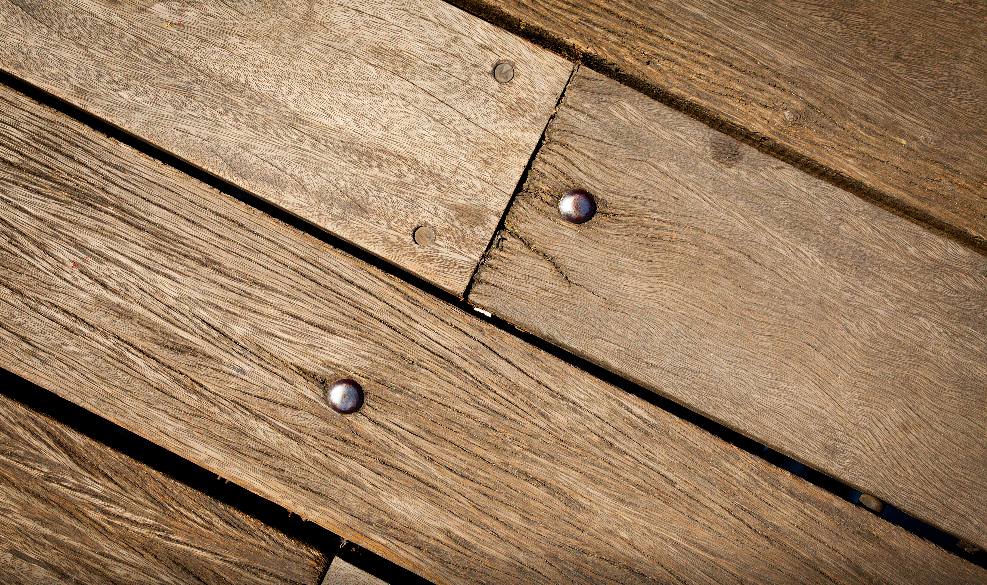Power washing your deck is one of those rights of passage for manliness. You have a powered tool and a goal: revitalize your property. Though you may want to step out onto your fortress of solitude, it’s important to approach this task with great care. That’s because a power washer can absolutely clean the deck, but it can also ruin the wood planks. Many people do not understand the need to select the correct pressure (that’s the “power” part of it) or place the nozzle too close to the wood.
(Side note: most power washers can be set powerful enough to etch brick)
So when do you know if you’re holding the tip too close to the wood planks? What pressure should you use? These are questions to which the answers depend on the details: does your pressure washer have more than 4,000 psi or only a few hundred? Is it gas or electric? What kind of wands do they offer?
Let’s talk about what you came here for…
A 3-Step Tutorial for a Successful Power Wash on Your Deck
SELECTION
Though power washers are unique, they’re all powerful. And you need to select the appropriate nozzle tip for your washer as well as set the correct psi (pound per square inch). If you’re power washing your home or sidewalk or driveway, you’ll need to follow different guidelines.
Here’s what we suggest.
The lower a nozzle tips degree is, the more concentrated the stream will be. It’s important that you select a tip that ranges somewhere between 40 and 60 degree output. This will help maximize the coverage area, spreading out the degree of pressure across a larger surface. You’ll also want to establish the strength of the washer:
- 500 to 600 psi for soft woods, like pine or cedar.
- 1,200 to 1,500 psi for harder woods (at an absolute maximum).
You will want to start at the lower-end of the psi to determine what your deck can handle. Make sure to hold the nozzle tip 2 feet from the wood’s surface, then slowly close in to around 16 inches.
And whether this is your first rodeo or you’re a seasoned washer, test an area that’s just a bit out of the way to test the pressure and effectiveness. After all, a wood step is a lot easier to replace than an entire wooden plank.
TECHNIQUE
So, you have your psi set to a low level. You’re holding the nozzle tip 2 feet from the surface, and you’ve begun lowering it to that sweet spot of 16 inches. Now, sweep your arm back-and-forth—and pay close attention to see if you need to adjust the pressure.
The most important feature of your technique is consistency. Be consistent with your sweeping motions, starting at your home’s foundation and moving away. And, of course, do not go against the grain.
So here are your three techniques, one of which we’ve already mentioned.
- Sweeping is intended to remove dirt, leaving behind absolutely no trace of a pressurized wash. If you hold the nozzle tip too far from the surface or don’t have enough pressure, you’ll have a surface that is a bit less clean than it could have been. So, find the right pressure and hit the right distance.
- Feathering helps masks the starts and stops of your sweep. You’ll want to overlap the surface you’ve already covered. Here’s the trick: make sure the point where you nozzle is now closest is at the point where you ended the previous stroke of your sweep. Work with the grain by spraying lengthwise with the deck’s boards, and you’ll notice that more strokes are required.
- Long Sweeping requires that you walk the fan the length of your deck board. As you walk, the nozzle tip should remain at the same distance throughout the entire stroke (across the board). This often requires more strokes. You should typically only use this method if you have no railing structure; otherwise, it may create difficult-to-remove lines across the surface where the fan stopped.
FOLLOW UP
Okay, you’ve done a great job cleaning the deck. There are just a few trouble spots, but this is a common occurrence. When lumber becomes wet, its fibers rise—causing splinters (yeah, nobody likes splinters). It’s time to smooth out those areas by sanding your deck.
Did you get that grumble out of the way?
It’s honestly not that difficult, and it will create a smooth walking surface and allow for stain or seal to soak in better because the wood is porous as a result.
Here are a few directions on how to properly sand your deck:
- No higher than 100-grit sandpaper on handrails
- 60-80-grit sandpaper for the deck’s surface
- Use a random orbital sander with a 5” pad
Need further help? Contact AAA Window Solutions today!
So, you’ve used these tips before and splintered your deck or you’re just not comfortable with power washing. That’s okay. You have the professionals at AAA Window Solutions to help you clean your deck, home, sidewalk, and more with effective power washing expertise.
Contact one of our friendly representatives today!

